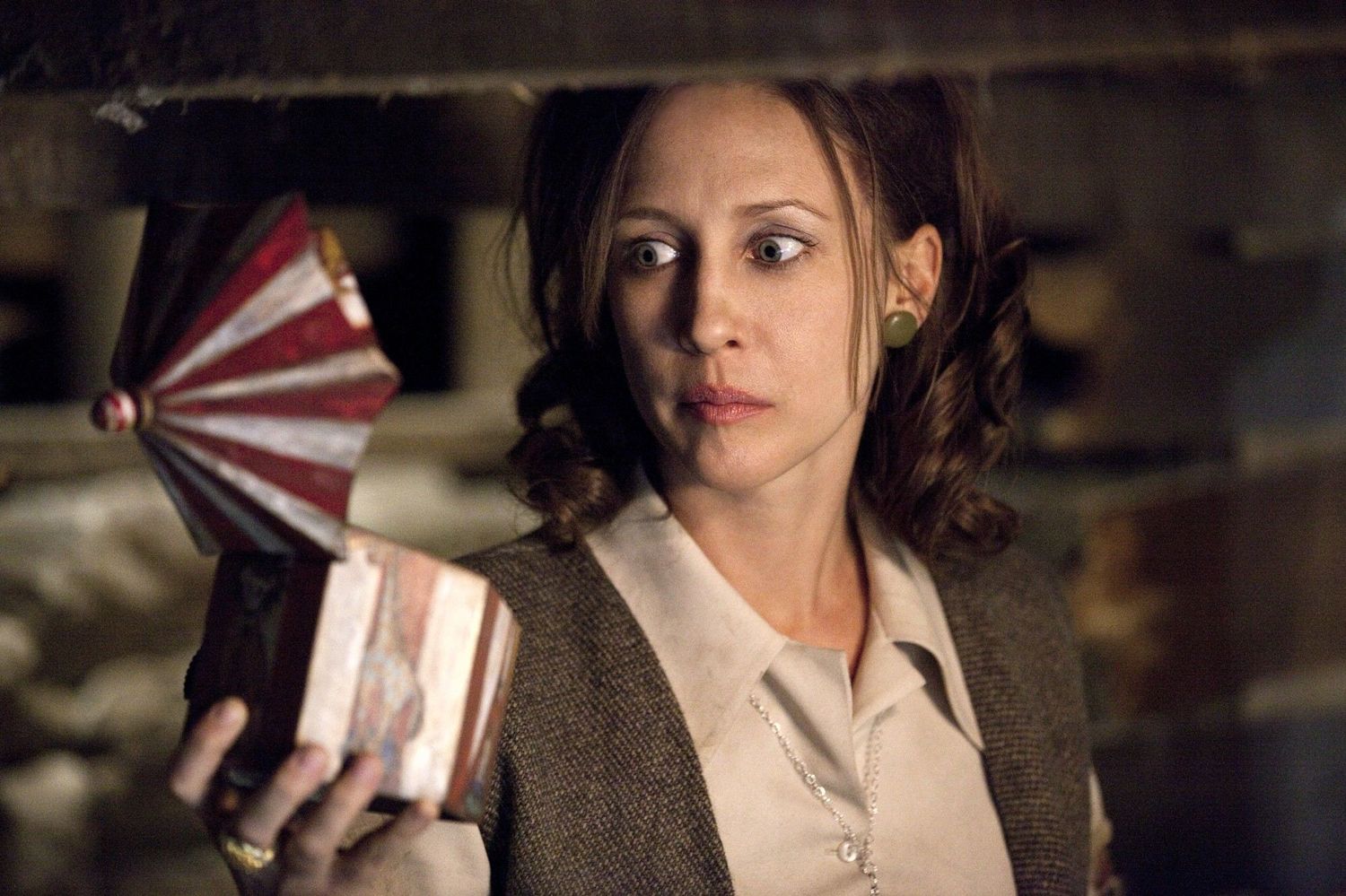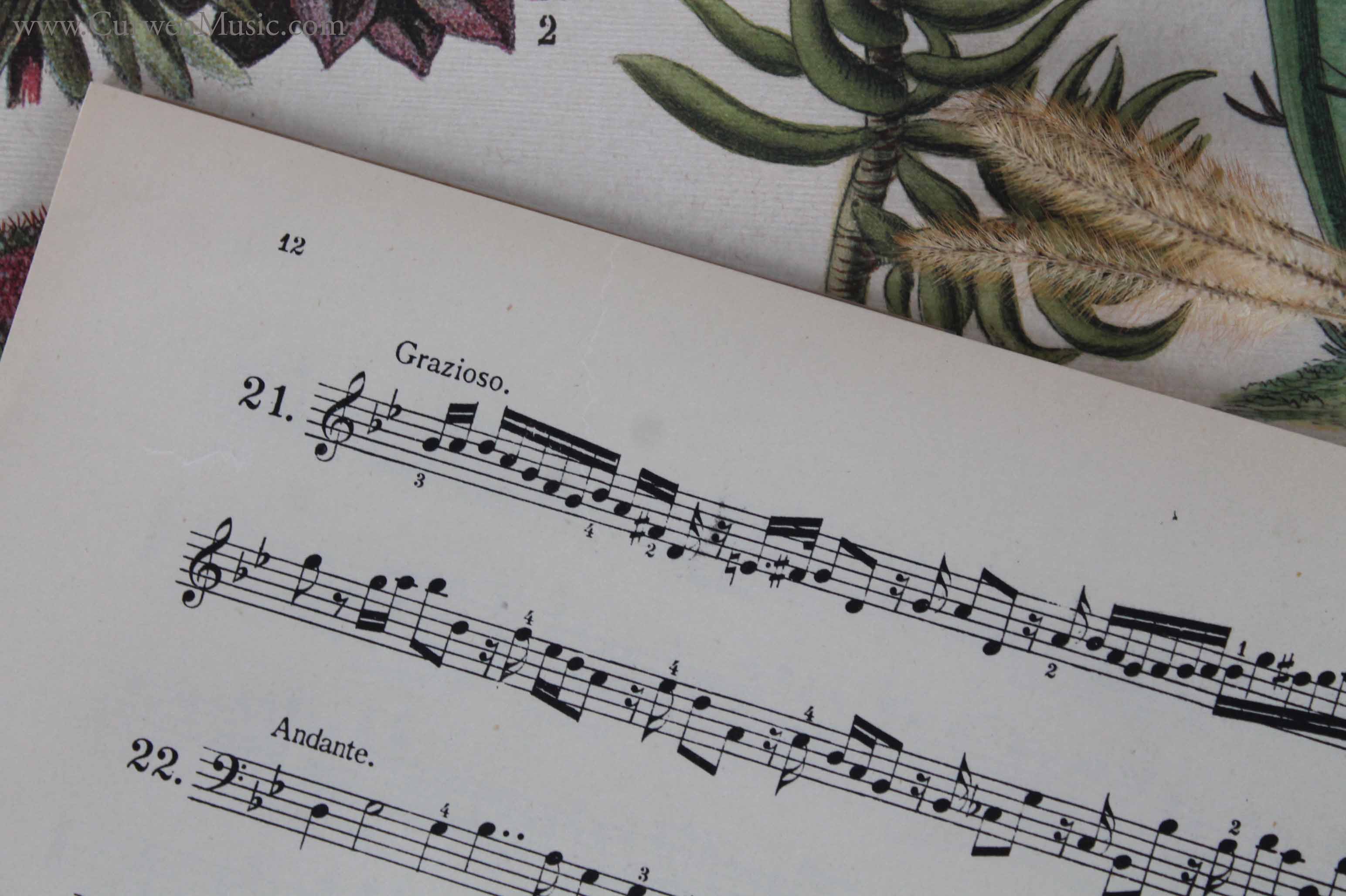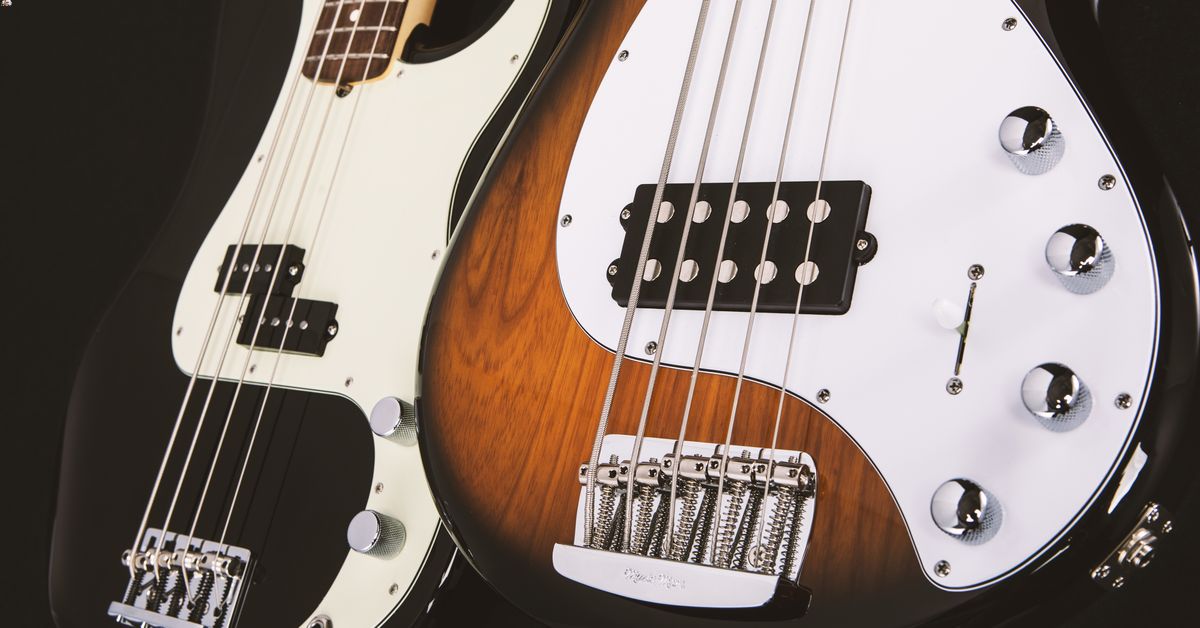Home>Devices & Equipment>Music Box>What Does The Music Box Have To Do With The Conjuring


Music Box
What Does The Music Box Have To Do With The Conjuring
Published: January 12, 2024
Discover the eerie connection between the music box and the terrifying events in the hit movie "The Conjuring". Uncover the chilling secrets of the music box in this suspenseful thriller.
(Many of the links in this article redirect to a specific reviewed product. Your purchase of these products through affiliate links helps to generate commission for AudioLover.com, at no extra cost. Learn more)
Table of Contents
- Introduction
- The History of the Music Box
- The Significance of the Music Box in “The Conjuring”
- The Music Box as a Symbol of Haunting and Evil
- The Role of the Music Box in the Plot of “The Conjuring”
- The Music Box as a Plot Device
- The Musical Themes in “The Conjuring” and their Relation to the Music Box
- Conclusion
Introduction
When it comes to horror films, there are certain elements that can send chills down your spine and create a sense of fear and unease. One such element is the music box, which has been used as a recurring motif in many horror movies. The haunting melody and the eerie sound it produces often provide a sense of foreboding and serve as a foreshadowing of the terrifying events to come.
One of the most notable appearances of a music box in a horror film can be found in “The Conjuring,” a supernatural horror film directed by James Wan. “The Conjuring” tells the chilling story of the Perron family, who move into a secluded farmhouse and are soon plagued by paranormal activity. Throughout the film, a music box plays a crucial role, both in setting the atmosphere and advancing the plot.
In this article, we will explore the history of the music box, the significance of its presence in “The Conjuring,” and its role as a plot device. We will also delve into the musical themes in the film and how they relate to the music box. So, grab a cozy blanket, dim the lights, and prepare to unravel the mystery behind the music box in “The Conjuring.”
The History of the Music Box
The music box, also known as a musical box or a musical snuffbox, has a rich and fascinating history that dates back several centuries. It is believed to have originated in the early 19th century in Switzerland and quickly gained popularity across Europe. These intricate and beautifully crafted mechanical devices were designed to produce melodies through a series of pinned cylinders or disks that activated the internal mechanism.
The music box became a beloved and cherished item among the aristocracy and wealthy individuals, who appreciated its ability to create soothing and melodious sounds. The craftsmanship put into these objects was remarkable, with delicate inlays, hand-painted designs, and ornate casings made from materials such as wood, metal, and porcelain.
Originally, music boxes were primarily owned by the elite, but as the technology advanced and production methods improved, they became more accessible to the general public. By the late 19th century, music boxes were widely available in various sizes and designs, catering to different tastes and budgets.
During the early 20th century, with the invention of the phonograph and later the advent of radio and other electronic devices, the popularity of the music box waned. However, the charm and allure of these mechanical wonders remained, leading to a resurgence of interest in the latter part of the century.
Today, music boxes are sought-after collector’s items and are cherished for their nostalgic appeal and intricate craftsmanship. Although modern reproductions are readily available, many collectors and enthusiasts still appreciate the beauty and authenticity of vintage music boxes.
In popular culture, the music box has often been portrayed as a mysterious and haunting object, linking it to supernatural and eerie themes. Its ability to produce enchanting melodies, combined with its mechanical nature, makes it a perfect symbol for the uncanny and unexplained.
Now that we have explored the history of the music box, let us dive into the significance of its presence in “The Conjuring,” and how it adds a sense of fear and impending doom to the story.
The Significance of the Music Box in “The Conjuring”
In “The Conjuring,” the music box serves as a powerful symbol, representing both the presence of supernatural forces and the impending danger faced by the characters. From the moment the music box is introduced, it begins to establish a sense of unease and sets the tone for the paranormal encounters that unfold throughout the film.
Firstly, the music box acts as a conduit for the evil spirits that haunt the farmhouse. It is through the repeated winding and activation of the music box that the spirits are able to manifest their presence and unleash their malevolent energy upon the Perron family. The haunting melody that emanates from the music box becomes a constant reminder of the supernatural forces at play, intensifying the sense of dread and anticipation.
Furthermore, the music box is closely tied to a specific character in the film. It serves as a personal possession of the youngest daughter, April, who becomes a target of the spirits. As the music box becomes more active and eerie events escalate, it becomes clear that it holds a strong connection to the paranormal occurrences within the house.
The music box also functions as a plot device, driving the narrative forward and leading the characters to uncover the dark history of the farmhouse. Its mysterious presence and the haunting melody it plays act as clues, guiding the investigators, Ed and Lorraine Warren, closer to unraveling the secrets behind the haunting.
Additionally, the music box symbolizes the fragility of innocence and the intrusion of evil into the lives of the characters. It represents a disruption of the peaceful and ordinary world, transforming it into a terrifying and chaotic environment. Its presence serves as a reminder that no one is safe from the malevolent forces lurking in the shadows.
Overall, the music box in “The Conjuring” holds significant symbolism, heightening the tension and fear within the film. Its haunting melody, connection to the supernatural, and role as a plot device all contribute to the overall atmosphere of the movie. As we continue to explore the role of the music box, we will delve into how it serves as a catalyst for the haunting experiences faced by the Perron family.
The Music Box as a Symbol of Haunting and Evil
Throughout history, the music box has often been associated with haunting and evil, making it a powerful symbol in horror storytelling. In “The Conjuring,” the music box embodies these themes, evoking a sense of foreboding and representing the presence of supernatural forces at work.
First and foremost, the haunting melody produced by the music box creates an eerie and unsettling atmosphere. The repetitive and melancholic tune sends shivers down the audience’s spines, foreshadowing the terrifying events that are about to unfold. The haunting sound of the music box becomes synonymous with the paranormal, instantly signaling a shift from the normal to the supernatural.
Furthermore, the mechanism of the music box, with its intricate gears and cogs, serves as a metaphor for the unexplainable and inexplicable. Just as the internal workings of the music box remain hidden and mysterious, so do the supernatural forces that plague the characters in the film. The music box becomes a physical manifestation of the unseen and unknown, heightening the sense of dread and uncertainty.
The music box also symbolizes the intrusion of evil into the lives of the characters. Its presence represents a disruption of peace and tranquility, as the innocent world of the characters is invaded by malevolent spirits. The music box acts as a vessel, channeling the negative energy and unleashing it upon the unsuspecting victims, intensifying their experiences of terror and helplessness.
Moreover, the music box serves as a reminder of the fragility of the human psyche. The haunting melody and the paranormal occurrences associated with the music box create a psychological impact on the characters, eroding their sense of safety and sanity. As the events escalate, the music box becomes a symbol of the characters’ descent into madness and their struggle to confront the evil that haunts them.
Overall, the music box in “The Conjuring” symbolizes haunting and evil, invoking a sense of fear and unease. Its haunting melody, mysterious mechanism, and representation of evil intrusion all contribute to its symbolic significance. As we delve deeper into the role of the music box in the plot, we will uncover its importance as a plot device and its connection to the musical themes in the film.
The Role of the Music Box in the Plot of “The Conjuring”
In the gripping plot of “The Conjuring,” the music box plays a pivotal role, driving the narrative forward and serving as a catalyst for the haunting experiences faced by the Perron family. It acts as a focal point for the supernatural occurrences, unraveling the dark history of the farmhouse and leading the characters towards a climactic confrontation with the forces of evil.
From the moment the music box is introduced, its presence becomes increasingly significant. It starts with subtle moments, where the music box is unexpectedly wound up or plays on its own, creating an unsettling atmosphere. These occurrences serve as a foreshadowing of the escalating paranormal events that follow.
The music box serves as a focal point for the spirits that haunt the farmhouse. It acts as a medium through which the supernatural entities communicate and manifest their presence. As the haunting becomes more intense, the music box becomes more active, its melodies serving as a haunting reminder of the evil spirits lurking in the shadows.
Moreover, the characters in “The Conjuring” recognize the connection between the music box and the supernatural occurrences. Ed and Lorraine Warren, the paranormal investigators, use the music box as a tool to understand the nature of the haunting and the spirit that resides within the farmhouse. They study the melodies and decipher the coded messages embedded in the music, uncovering the tragic history behind the haunting.
The music box becomes a driving force in the investigation, leading the characters towards important discoveries and helping them piece together the puzzle of the haunting. It also acts as a means of communication, as the spirits use the music box to convey their intentions and desires to the characters, further heightening the tension and suspense.
Furthermore, the music box serves as a turning point in the plot, marking a shift from confusion and fear to a determined effort to confront and overcome the evil spirits. The characters realize that the music box holds the key to solving the mystery of the haunting and freeing the family from their terrifying ordeal.
In summary, the music box in “The Conjuring” has a vital role in the plot, acting as a conduit for the supernatural, guiding the characters towards understanding and ultimately resolving the haunting. Its significance as a plot device underscores the importance of unraveling the mystery behind the music box and the spirits it represents.
The Music Box as a Plot Device
In “The Conjuring,” the music box serves as a crucial plot device, driving the narrative and propelling the characters forward in their journey to uncover the truth behind the haunting. It acts as a catalyst for the events that unfold, providing clues and guiding the characters towards the resolution of the terrifying mystery.
From the moment the music box is introduced, it immediately captures the attention of the characters and the audience alike. Its haunting melody and mysterious presence create a sense of intrigue, signaling that it holds a deeper significance within the story. The characters’ curiosity and fascination with the music box become the driving force behind their exploration of the paranormal phenomena occurring in the farmhouse.
The music box acts as a compass, leading the characters towards important revelations. As they investigate the origins of the haunting, the music box becomes a focal point for their discoveries. Its melodies and the messages encoded within them offer vital clues about the evil presence that lurks within the household and its connection to the spirits haunting the Perron family.
Furthermore, the music box serves as a link between the present and the past, connecting the characters to the dark history of the farmhouse. Through their understanding of the music box’s significance and its ties to the spirits, the characters are able to unearth the tragic events that transpired in the past, shedding light on the reasons behind the haunting and the malevolent forces at work.
The music box also serves as a tool for communication with the spirits. Its activation and melodies become a means for the supernatural entities to convey their intentions, desires, and warnings to the characters. As they decipher the messages within the music, the characters gain valuable insights into the nature of the haunting and the steps necessary to confront and banish the evil.
Moreover, the music box drives the characters to take action. Its mysterious and menacing presence compels them to delve deeper into the supernatural, pushing them outside of their comfort zones to face their fears and confront the malevolent forces. As the music box becomes more active and the haunting escalates, the characters are driven to find a solution and bring an end to the terrifying ordeal.
Overall, the music box serves as a pivotal plot device in “The Conjuring.” It not only guides the characters along their journey of discovery but also acts as a channel for communication with the spirits and a symbol of the ongoing presence of evil. It adds layers of intrigue and mystery to the narrative, heightening the suspense and propelling the characters towards the climactic resolution of the haunting.
The Musical Themes in “The Conjuring” and their Relation to the Music Box
Music plays a significant role in setting the tone and atmosphere of any film, and “The Conjuring” is no exception. The musical themes present in the film not only enhance the sense of fear and suspense but also establish a strong connection to the music box, reinforcing its central role in the story.
One of the key musical themes in “The Conjuring” is the haunting melody that emanates from the music box. This recurring motif serves as a sonic representation of the supernatural forces at play. The eerie and melancholic tune instantly creates an atmosphere of unease, its presence serving as a reminder of the imminent danger faced by the characters. The haunting melody becomes synonymous with the music box itself, as well as the presence of evil within the farmhouse.
In addition to the music box’s haunting melody, the film incorporates other musical elements that intensify the sense of dread. Low, ominous tones and dissonant chords are used during moments of suspense and tension, heightening the audience’s anticipation and signaling the presence of supernatural entities. These musical choices serve to augment the impact of the haunting and create a chilling atmosphere throughout the film.
Furthermore, the juxtaposition of silence with sudden bursts of chilling music amplifies jump scares and shocking moments. The absence of music in certain scenes builds tension, causing the audience to hold their breath in anticipation. When the music suddenly swells, it elicits a visceral reaction, heightening the sense of terror and intensifying the impact of the on-screen events. This dynamic use of sound further enhances the impact of the music box and its association with the supernatural occurrences in the film.
As the plot unfolds, the music box melodies become more distorted and unsettling, mirroring the escalation of the haunting and the danger faced by the characters. The once familiar and calming tune turns into a spine-chilling and haunting sound, reflecting the growing malevolence within the farmhouse and the characters’ descent into the horrors of the supernatural. This transformation of the music box’s melody serves as a powerful audio cue, signaling the characters’ increasing peril.
In summary, the musical themes in “The Conjuring” are carefully crafted to complement and enhance the presence of the music box. The haunting melody, ominous tones, and dynamic use of sound all work in tandem to create a chilling atmosphere and strengthen the connection between the music box and the supernatural. Through the haunting melodies and the strategic use of silence and dissonance, the film effectively communicates the presence of evil and intensifies the sense of fear for both the characters and the audience.
Conclusion
The music box in “The Conjuring” serves as a powerful and symbolic element within the film, adding an extra layer of fear and intrigue to the story. From its haunting melody to its connection to the supernatural, the music box plays a crucial role in setting the tone and driving the plot forward.
Throughout history, the music box has been associated with mystery and enchantment. It has captivated people with its delicate craftsmanship and ability to produce beautiful melodies. In “The Conjuring,” however, the music box takes on a darker role, becoming a symbol of haunting and evil.
As a plot device, the music box guides the characters towards unraveling the dark history of the farmhouse. Its mysterious messages and melodies provide crucial clues, leading the investigators, Ed and Lorraine Warren, closer to understanding and ultimately combating the supernatural forces at work.
The music box’s significance goes beyond its role in the plot. Its presence represents a disruption of peace and innocence, embodying the intrusion of evil into the lives of the characters. The haunting melody and the eerie sounds it produces intensify the atmosphere of fear and anticipation, keeping the audience on the edge of their seats.
Furthermore, the music box’s connection to the musical themes in the film enhances the overall cinematic experience. The haunting melodies, dissonant tones, and strategic use of sound all serve to heighten the sense of dread and amplify the impact of the supernatural occurrences.
In conclusion, the music box in “The Conjuring” acts as more than just a prop. It becomes a character in itself, symbolizing the haunting and evil that permeates the film. Its significance in the plot, its role as a plot device, and its relation to the musical themes all contribute to its haunting presence and its ability to captivate and terrify audiences.
So, the next time you come across a music box, remember the chilling tale it tells in “The Conjuring” and the power it holds to evoke fear and dread. With its delicate exterior and haunting melody, the music box continues to be a timeless and iconic element in horror storytelling.











